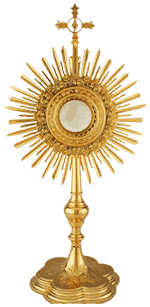The tradition of covering (or “veiling”) the crucifix and statues this Sunday dates from the Church calendar prior to the Second Vatican Council when the Fifth Sunday of Lent was called “Passion Sunday” and the period from this Sunday until Holy Saturday was called “Passiontide.” Elements of Passiontide remain in the liturgy in that the Preface of the Passion of Our Lord is read at all weekday Masses from now until Holy Thursday.
In the Roman Missal we find this instruction: “In the Dioceses of the United States, the practice of covering crosses and images throughout the church from [the fifth] Sunday [of Lent] may be observed. Crosses remain covered until the end of the Celebration of the Lord’s Passion on Good Friday, but images remain covered until the beginning of the Easter Vigil.”
The origin of this practice is difficult to determine. Some liturgical commentators date it to 9th century Germany when a “hunger cloth” was hung in front of the altar on Ash Wednesday to veil it from view. The cloth remained throughout Lent and was removed during the reading of the Passion on Holy Wednesday at the words “the veil of the temple was rent in two.” Others attribute the veiling to an even more ancient origin (pre-5th century) because of the passage from the Gospel of John formerly read on this Sunday where he “veiled” His Divinity: “Jesus hid himself and went out of the Temple” (Jn 8:59). Whatever the origin, the veiled images are a reminder that we have entered into a different, more sacred time. The veils provide a heightened sense of anticipation as we approach Holy Week, when we celebrate the events in the life of Jesus Christ that led to our salvation.




